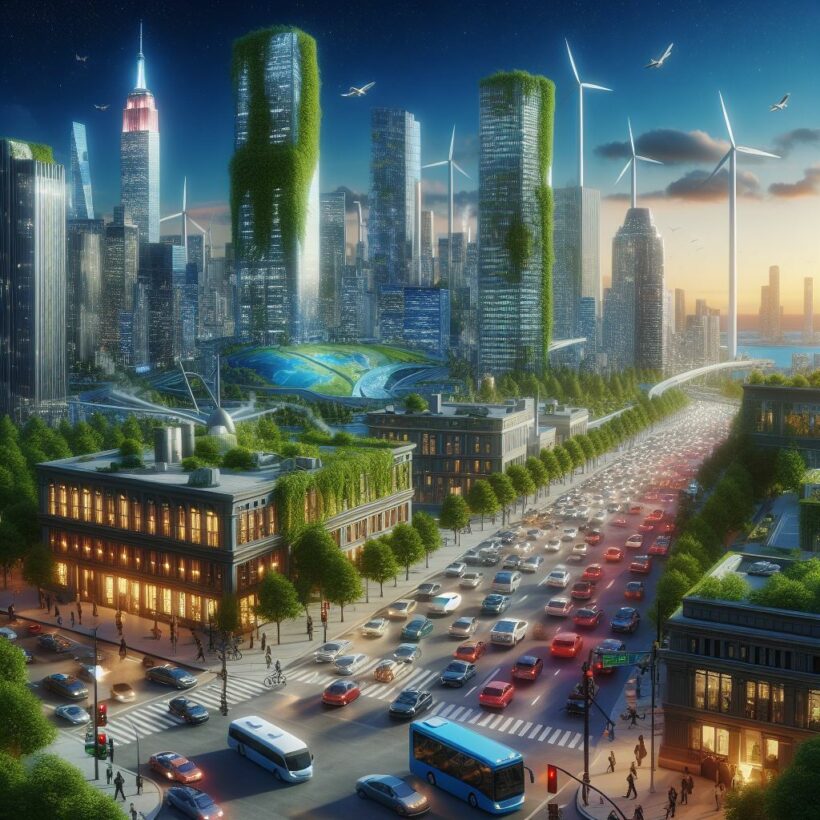Greenhouse gas emissions in the United States fell by 1.9 percent in 2023 — the lowest level since 1969 — mostly due to less coal power generation, according to preliminary estimates released by independent research firm the Rhodium Group.
By Cristen Hemingway Jaynes
Following two years of increasing emissions, and with the country’s economy expanding by 2.4 percent, emissions fell to 17.2 percent lower than those in 2005. But they need to fall much faster to meet Paris Agreement goals of 50 to 52 percent below 2005 levels by the end of the decade.
“To meet the 2030 goal, we need to see more than triple that every year,” said Ben King, associate director of energy and climate practice with the Rhodium Group, as reported by NPR. “We need to see 6.9% decreases starting in 2024 through 2030.”
According to the Rhodium Group, an eight percent reduction in emissions from the power sector, coupled with a four percent decline from commercial and residential buildings, drove the overall drop. Transportation — the sector with the highest emissions — went up by 1.6 percent from 2022 levels last year, while the second highest-emitting sector, industry, gained one percent.
“It can be tricky to disaggregate structural decarbonization from weather and economic drivers without substantial additional data, but longer-term trends can be revealing. US GHG emissions reached their peak after the 2009 recession in 2010, after which emissions declined on average 0.7% annually from 2011 through 2019 before the pandemic and its associated economic impacts yielded a steep drop in GHG emissions,” the Rhodium Group said.
The firm added that more power came from nuclear than coal for the second time ever last year.
A mild winter with less fuel demand meant lower emissions overall in the buildings sector.
Natural gas continued to expand, growing at more than two times the rate of renewables.
“In the coming years, we’d expect to start seeing surges in renewable energy deployment and surges in the number of electric vehicles on the road,” King said, as The New York Times reported. “The big question is how fast emissions will fall as a result.”
The firm said the Infrastructure Investment and Jobs Act, as well as the Inflation Reduction Act, will be behind big greenhouse gas emissions reductions in the coming years.
“The science is clear that additional policies are needed — including policies to sharply curtail the expansion of fossil fuels — for the U.S. to meet its climate goals for 2030 and beyond,” said Rachel Cleetus, Union of Concerned Scientists’ climate and energy program policy director, as reported by NPR.
Most emissions increases in the industrial sector last year were driven by carbon released during production and transportation, as well as the flaring, leaking, and venting of methane. Newly finalized rules for oil and gas methane by the U.S. Environmental Protection Agency will reduce emissions from the sector by almost 40 percent by the late 2020s. However, for significant progress to be made toward industrial decarbonization, chemical production, iron and steelmaking, and cement manufacturing will also need to curb their emissions.
“For now, a decline in emissions in 2023 is a step in the right direction,” the Rhodium Group said. “But the deadline for the US 2030 climate target under the Paris Agreement of a 50-52% reduction in GHG emissions below 2005 levels is rapidly approaching, and achievement of that goal looks ever more challenging absent a major new policy push… We’ll be watching to see if the US can sustain and accelerate its 2023 emissions decline in 2024 and beyond.”
Cristen is a writer of fiction and nonfiction. She holds a JD and an Ocean & Coastal Law Certificate from the University of Oregon School of Law and an MA in Creative Writing from Birkbeck, University of London. She is the author of the short story collection The Smallest of Entryways, as well as the travel biography, Ernest’s Way: An International Journey Through Hemingway’s Life.










